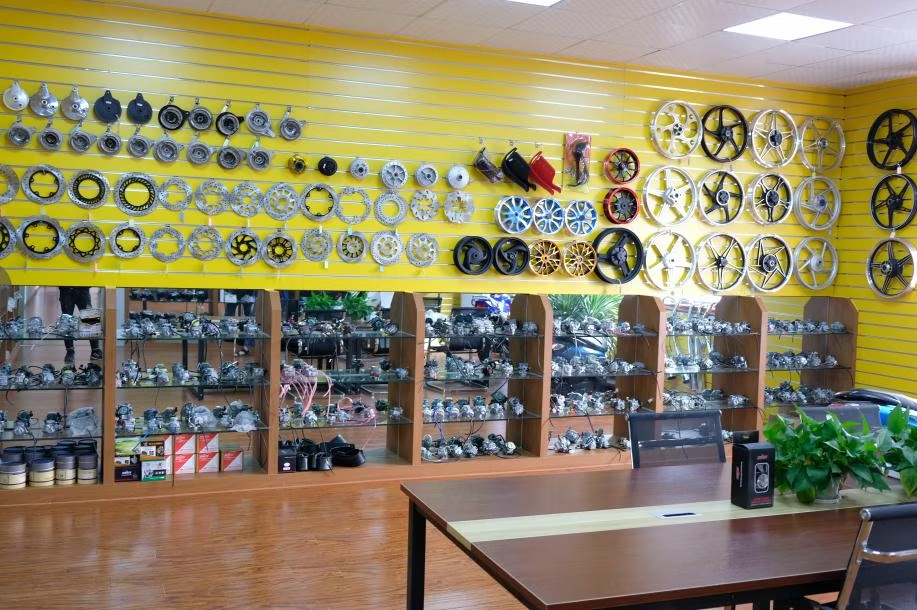Recognizing the Important Components of a Bike: A Comprehensive Overview for Enthusiasts
For motorcycle enthusiasts looking to boost their riding experience and guarantee their bikes run smoothly, comprehending the necessary elements of a motorbike is paramount. Each component, from the engine's complex functions to the important role of the stopping systems, not only influences performance yet likewise safety and convenience.
Engine Components

The camshaft plays a vital role in managing the timing of the engine's shutoffs, making sure the precise opening and closing needed for effective fuel and air consumption, along with exhaust expulsion. This timing is critical to preserving ideal engine efficiency and performance. Additionally, the carburetor or fuel injection system, depending upon the bike model, is accountable for blending air with gas in the correct ratio for combustion.
The cooling system, either air or liquid-based, works to maintain the engine's temperature within operational restrictions, preventing overheating and guaranteeing long life - motocross parts nz. Each part, meticulously created and integrated, contributes to the smooth procedure of the engine, specifying the motorbike's power output and total efficiency
Transmission System
Integral to the bike's capability, the transmission system makes sure effective power transfer from the engine to the wheels. This system makes up several critical parts, consisting of the clutch, gearbox, and final drive, each playing an essential function in equating the engine's power into movement. The clutch, generally operated by a hand bar, offers to disengage the engine and engage from the transmission, enabling smooth equipment changes and regulated velocity.
The gearbox, usually described as the transmission proper, contains a set of gears that cyclists can manually change with to readjust the bike's speed and torque result. These gears are prepared in a sequence that makes it possible for the motorbike to accelerate smoothly and keep ideal engine efficiency across numerous rates. Many motorcycles use a sequential transmission, needing the rider to change gears in a predetermined order.
Braking Systems
While understanding the transmission system is key to taking advantage of a motorbike's power, equally essential is the capability to control and quit that power successfully, which is where stopping mechanisms enter play. Brakes are important for safety and security and performance, supplying the rider with the required control to browse numerous terrains and conditions. Normally, motorcycles feature two sorts of stopping systems: disc brakes and drum brakes.
Disc brakes are much more common in contemporary motorbikes due to their remarkable efficiency. This system uses far better warmth dissipation, regular efficiency, and boosted quiting power, particularly in damp problems.
Alternatively, drum brakes, though less usual, are still located in some motorbikes. They function by pressing brake shoes against the inner surface area of a drum affixed to the wheel. While generally much less reliable in browse this site warm dissipation and click this quiting power, drum brakes are less complex and a lot more cost-efficient.
Recognizing these stopping systems' nuances allows cyclists to preserve their motorbikes appropriately and appreciate the design that makes certain reliable and risk-free stopping.
Suspension and Guiding
Suspension and guiding systems are important elements that dramatically affect a motorcycle's handling and ride convenience. The shock absorber, including forks at the front and shock absorbers at the rear, soaks up roadway irregularities, boosting security and control. Front forks, upside down or typically telescopic, compress and rebound to minimize influences, while rear shock absorbers keep tire contact with the roadway, vital for grip and safety and security.
Steering, focused around the handlebars, links the rider to the motorbike's directional control. The steering head bearings make certain smooth operation, allowing exact maneuverability. Correct alignment and upkeep of these bearings are vital for predictable guiding feedback and decreasing rider fatigue.
The suspension's adjustability is another vital facet; preload, damping, and rebound settings enable customization to match different riding conditions and designs. This adaptability is necessary for optimizing performance, whether browsing metropolitan roads or dealing with sturdy trails. Advancements like electronic suspension systems use real-time adjustments, boosting ride top quality across diverse surfaces.

Electric Equipments
After ensuring a smooth and controlled experience via reliable suspension and guiding systems, attention turns to the electrical systems, a critical element of modern-day bikes. These systems play a crucial role not only in starting the engine however likewise in powering numerous elements that boost the capability and safety of the motorcycle.
At the heart of a motorcycle's electric system is the battery, which stores electric energy required for starting the engine and powering auxiliary systems - motorcycle parts nz. The alternator or generator, combined with the rectifier-regulator, guarantees the battery remains charged while the motorcycle is in procedure, transforming mechanical power into electrical power and keeping voltage degrees
The ignition system, one more crucial element, is accountable for sparking the air-fuel blend in the engine's cylinders. Modern motorbikes frequently utilize a digital ignition system, using higher efficiency and dependability compared to typical systems.
Lights systems, including fronts lights, tail lights, and indications, are additionally crucial, guaranteeing visibility and safety and security for the motorcyclist. click to investigate Additional digital elements such as sensors, control devices, and shows add to innovative attributes like fuel shot administration, anti-lock braking systems (ABDOMINAL), and digital control panels, even more boosting the riding experience.
Conclusion
A thorough comprehension of a motorbike's necessary parts, including the engine, transmission system, braking devices, suspension, steering, and electric systems, is crucial for lovers aiming to optimize safety and security, efficiency, and comfort. Proficiency of these components enables informed decisions concerning upkeep and upgrades, inevitably boosting the riding experience. By incorporating this knowledge, bikers can ensure their motorbikes run at peak performance and reliability, thereby making the most of both pleasure and longevity of their cars.
For motorbike fanatics looking to raise their riding experience and guarantee their bikes run efficiently, recognizing the necessary elements of a bike is extremely important.Indispensable to the bike's capability, the transmission system makes certain reliable power transfer from the engine to the wheels.While recognizing the transmission system is crucial to using a motorcycle's power, similarly essential is the capability to control and stop that power successfully, which is where braking mechanisms come into play. Typically, bikes include two types of stopping systems: disc brakes and drum brakes.
A thorough understanding of a motorbike's vital components, including the engine, transmission system, stopping systems, suspension, steering, and electrical systems, is vital for fanatics aiming to optimize convenience, performance, and safety and security.